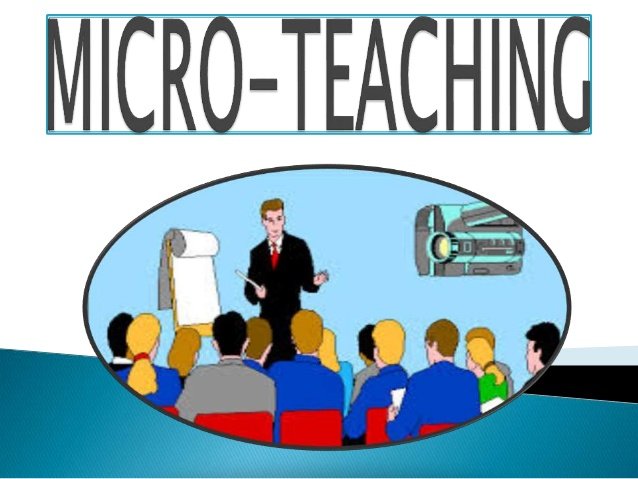Micro teaching? A powerful teaching technique. In a simulated classroom setting, educators practice delivering short lessons. Each session provides valuable feedback for improvement. Mastering the art of micro teaching hones teaching skills effectively. It’s a dynamic way to enhance pedagogical strategies. Ready to unlock your potential through micro teaching? Let’s dive in.
The Magic of Micro Teaching: Enhancing Learning in Small Steps
Welcome, young learners! Have you ever heard of something called micro teaching? It might sound like a tiny form of teaching, but trust me, its impact is huge! Today, we are going to dive into the world of micro teaching and discover how it can make learning fun and exciting for students of all ages.
What is Micro Teaching?
Micro teaching is like learning in bite-sized pieces. It’s all about breaking down big lessons into small, manageable parts so that students can understand and absorb the information more easily. Imagine trying to eat a giant sandwich in one go – it would be difficult, right? But if you cut it into smaller pieces, it becomes much easier to enjoy! That’s exactly how micro teaching works.
The Benefits of Micro Teaching
Now, you might be wondering, why should we bother with micro teaching when we can learn things the traditional way? Well, here are some amazing benefits of micro teaching that will make you a fan in no time:
1. Increased Focus
When lessons are broken down into smaller chunks, students can focus better on each part without feeling overwhelmed. It’s like solving a puzzle – piece by piece until you see the whole picture!
2. Better Retention
Have you ever studied for a test only to forget everything the next day? With micro teaching, students are more likely to remember what they learn because the information is presented in a way that is easier to remember.
3. Active Participation
Micro teaching encourages students to participate actively in the learning process. By engaging with small tasks and activities, students feel more involved and interested in the subject.
How Micro Teaching Works
Now that you understand the benefits of micro teaching, let’s see how it actually works in the classroom. Imagine your teacher wants to teach you about the solar system. Instead of giving you a long lecture, they could break it down into smaller lessons:
Lesson 1: The Sun
Your teacher starts by teaching you all about the Sun – how big it is, what it’s made of, and why it’s important for life on Earth. You might even get to do a fun experiment with a flashlight to understand how the Sun’s light reaches us!
Lesson 2: The Planets
In the next lesson, you learn about the planets in our solar system. Each planet gets its own mini-lesson, where you explore fun facts and maybe even create a model of the solar system using fruits!
Lesson 3: The Moon and Stars
Finally, you delve into the fascinating world of the Moon and stars. You might get to observe the night sky with a telescope or learn how the Moon affects the tides on Earth.
Micro Teaching Techniques
Teachers use various techniques to implement micro teaching effectively. Let’s explore some of the most popular techniques that make learning a breeze:
1. Think-Pair-Share
In this technique, students are given a question to think about individually, then discuss it with a partner, and finally share their thoughts with the class. It encourages collaboration and critical thinking.
2. Peer Teaching
Peer teaching involves students teaching each other in small groups. This technique not only helps students understand the topic better but also improves their communication and leadership skills.
3. Mini-Lectures
Mini-lectures are short, focused lessons that cover specific topics. These lectures are interactive and engage students through discussions, visual aids, and hands-on activities.
Bringing Micro Teaching Home
Micro teaching isn’t just for the classroom – you can bring it home too! Here are some simple ways to incorporate micro teaching into your everyday learning:
1. Daily Flashcards
Create flashcards with new words, facts, or math problems. Review a few flashcards every day to reinforce your learning and improve retention.
2. Mini-Experiments
Try simple science experiments at home to understand scientific concepts better. You could create a volcano using baking soda and vinegar or observe how plants grow from seeds.
3. Story Starters
Write short stories or paragraphs based on creative prompts. This will not only enhance your writing skills but also spark your imagination!
Micro teaching is like a magic wand that makes learning engaging, effective, and fun! By breaking down lessons into smaller parts, students can grasp complex concepts with ease and enjoy the learning process. So, the next time you’re struggling with a big lesson, remember the power of micro teaching and watch your understanding grow step by step. Happy learning!
The Power of Microteaching
Frequently Asked Questions
What is micro teaching?
Micro teaching is a technique used in teacher education where teachers practice their teaching skills in a controlled setting, typically with a small group of peers or students. It involves delivering a short lesson, receiving feedback, and reflecting on ways to improve teaching strategies.
How can micro teaching benefit educators?
Micro teaching provides educators with a safe environment to practice and refine their teaching techniques. It allows for targeted feedback and self-reflection, which can lead to improvement in classroom instruction. By identifying strengths and areas for growth, teachers can enhance their teaching effectiveness.
What are the key components of a micro teaching session?
A typical micro teaching session consists of planning a short lesson, delivering the lesson to a small group of peers or students, receiving constructive feedback from observers, and engaging in reflective discussion to identify strengths and areas for improvement. The focus is on specific teaching skills and strategies.
How can feedback be helpful in micro teaching?
Feedback in micro teaching is crucial for educators to gain insights into their teaching practices. Constructive feedback from peers or mentors can highlight effective teaching techniques, areas needing improvement, and suggestions for enhancing student engagement. It helps teachers reflect on their teaching methods and make adjustments for improvement.
Final Thoughts
Micro teaching is a powerful tool for educators to enhance their teaching skills. By practicing with a small group of students, teachers can receive valuable feedback for improvement. This hands-on approach allows for targeted adjustments and boosts confidence in the classroom. In conclusion, micro teaching is a practical method for educators to refine their teaching techniques and ultimately improve student learning outcomes.



